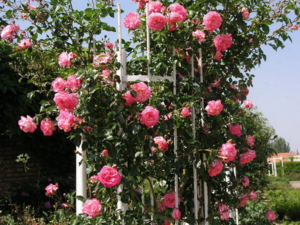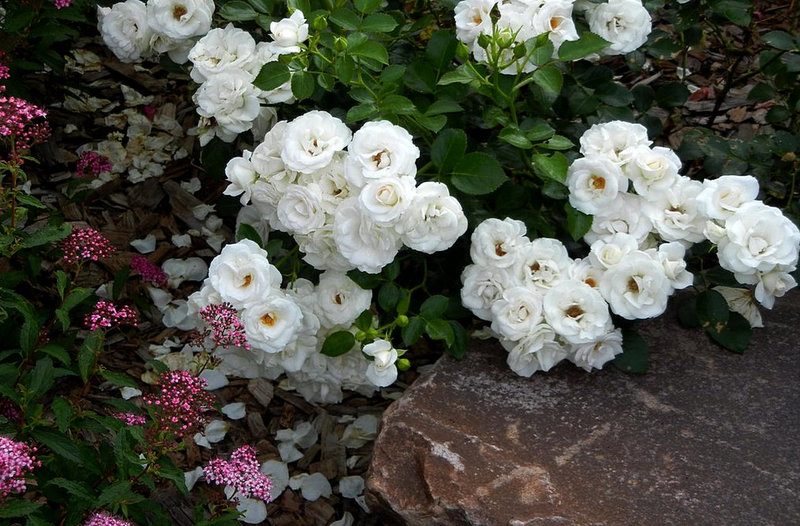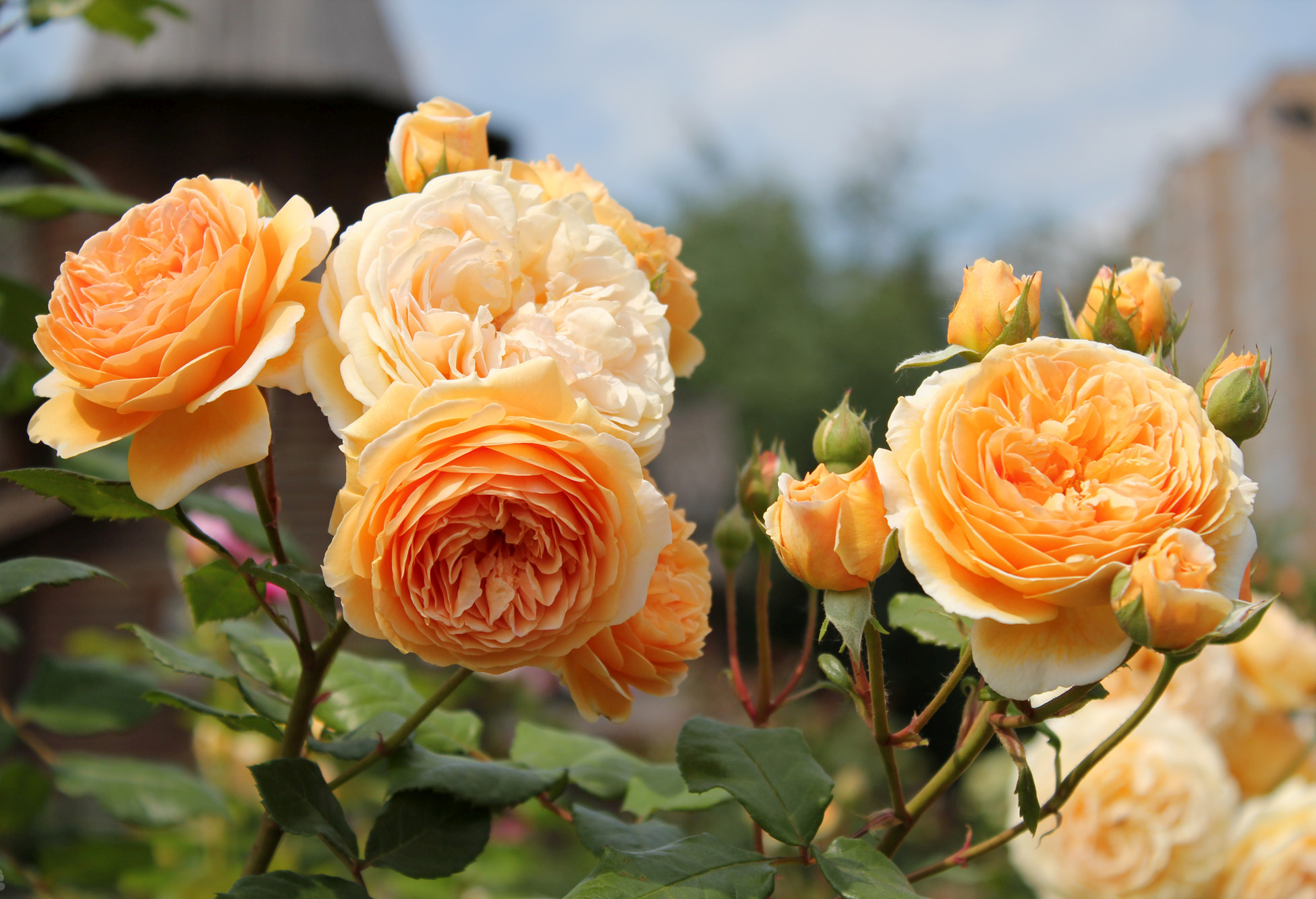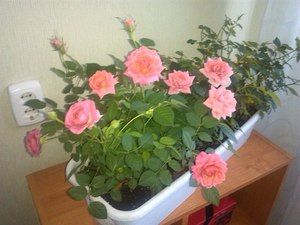 Hardly anyone wants to argue that roses are the most beautiful flowers that attract many. And giving one of these in a pot is a good alternative to a donated cut bouquet. After all, the bouquet will wither in a few days, having lost all its attractiveness, and room, if transplanted and actively cared for, it will delight you with its flowers for many years.
Hardly anyone wants to argue that roses are the most beautiful flowers that attract many. And giving one of these in a pot is a good alternative to a donated cut bouquet. After all, the bouquet will wither in a few days, having lost all its attractiveness, and room, if transplanted and actively cared for, it will delight you with its flowers for many years.
Probably, many do not know that plants grown for sale and purchased in a store should not continue to grow in the same soil in which they grew. This is because for active growth, the flowers were treated with special fertilizersin order to get a grown and flourished sample of garden culture in a short time.
Once home, the plant stops receiving the dose of stimulants to which it is accustomed and begins to lose its attractive appearance. To avoid this situation, a room rose should be transplanted immediately after it enters its permanent place of growth and carrying out all preparatory procedures. How to do it correctly, we will figure it out.
Training
Before you start transplanting a plant, you need to prepare a flower by performing a series of simple manipulations that are extremely necessary.
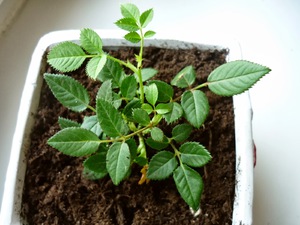 The first step is to thoroughly rinse the entire plant with soapy water. After such treatment, it is better for the flower to arrange a contrast shower, which will wash away all soap residues. The main thing, so that hot water does not exceed forty degrees Celsius otherwise, the leaves may be damaged. The pot of soil itself must be placed in a container filled with water and allowed to stand for at least thirty minutes.
The first step is to thoroughly rinse the entire plant with soapy water. After such treatment, it is better for the flower to arrange a contrast shower, which will wash away all soap residues. The main thing, so that hot water does not exceed forty degrees Celsius otherwise, the leaves may be damaged. The pot of soil itself must be placed in a container filled with water and allowed to stand for at least thirty minutes.
After water procedures, experts advise to treat the bush with solutions based on a drug called "Epin". This assistant to florists and gardeners has many desirable qualities that provide plant growth stimulation, strengthen the flower's immune system, which is what it needs for full-fledged growth at home.
From this drug you need to prepare a solution that contains a liter of water and five drops of "Epin". The bush must be thoroughly sprayed with these compounds. From above cover the plant with a plastic bag, but in such a way that the bag comes into contact with the leaves of the flower as little as possible. This can be achieved by installing a simple structure of sticks around the greenery of the bush, and then pulling a bag over it.
Carrying out the processing procedures for "Epinoma", you need to know that the bush cannot be left in a homemade greenhouse without ventilation. You need to start with a five-minute airing and increase this time every day. When the buds start to wither, you need to remove them all and remove the polyethylene. This completes all the preparatory procedures that occur before transplanting a room rose, and the transplant itself begins.
What materials are needed
To carry out a successful procedure, you need to prepare all the materials necessary for this manipulation.
What you need to have in stock:
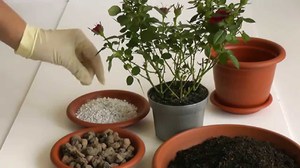 An appropriately sized ceramic or plastic pot.
An appropriately sized ceramic or plastic pot.- Fertile soil.
- Drainage material.
When choosing a pot, you need to take into account that it should be several centimeters larger in size than the pot in which the flower was bought. This will allow the plant to grow freely.by regularly increasing the root mass.
But do not buy too large a pot, this will provoke the plant to grow actively, not thereby allowing new buds to be tied, but for a rose this is irrelevant, since this flower is acquired precisely because of its charming flowering.
Of course, it is better to buy the substrate in a store where this particular flower is indicated on the package. Moreover the purchase must take place in a specialized flower shop or garden centers of a large supermarket. This ensures that in the bag with soil there will be a mixture that corresponds in composition to the parameters stated on the package.
If there is no such specialized land, then you can choose the soil yourself, although this is not recommended. It should be loose and have both neutral and slightly acidic reactions.
Buying a ceramic pot entails  small procedures that need to be done with himbefore transplanting a flower into it. It must be completely immersed in water for several hours.
small procedures that need to be done with himbefore transplanting a flower into it. It must be completely immersed in water for several hours.
Make sure the pot has drainage holes. If they are not there, then this is not a pot, but a pots. In the case of a plastic product the problem is easy to fixby glowing a screwdriver over the fire and making holes in the bottom. If the product is made of ceramics, then it is not suitable for planting and you need to purchase another container more suitable for transplanting.
Instructions for transplanting a room rose
To transplant a flower, you need to start by carefully removing it from the old pot. Then you will need boiled warm water, in which the roots of the plant should be immersed... By ridding the flower of old soil from its roots, it is possible to free the rose from the excess of chemicals that it was fed with for rapid growth.
The transplanting process itself takes place in two stages:
- Drainage is poured into the bottom of the pot.
- A bush is installed in a pot and gradually poured in soil, periodically tamping it.
You need to fill up the soil in the pot in such a way that at least two centimeters remain to the brim.
You should not water the flower immediately after transplanting. It is better to choose a place for him in the shade and leave it there for a day. Then he needs to be assigned to a permanent place where it will be light and cool. Windows are best, facing the southeast side, but if there are none, then you need to put the flower in the most illuminated place in the apartment. You need to water this plant from below, pouring settled water into a pan that stands under the pot.
When the adaptation process after transplanting has passed, as a rule, it takes about a month, the rose bush needs to be fed with fertilizers intended for flowering plants.
If the flower is comfortable in the created conditions, then soon he will reward for his care with numerous budsthat will create an atmosphere of celebration and comfort. And such a period can last for a very long time, not excluding the winter months.
